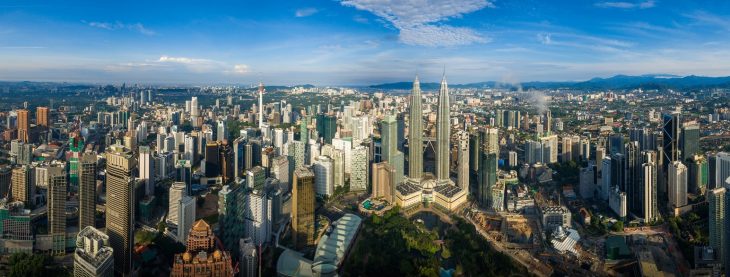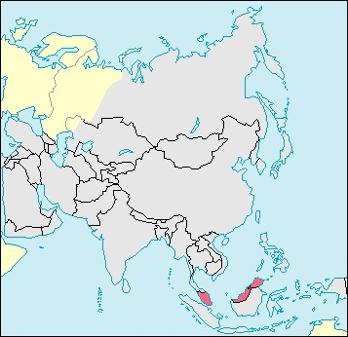What is the Capital of Malaysia? Kuala Lumpur

Capital City of Malaysia: Kuala Lumpur
City Overview
Kuala Lumpur, often abbreviated as KL, is the capital and largest city of Malaysia, located in the central part of the Malay Peninsula. As the heart of Malaysia’s political, economic, and cultural activities, Kuala Lumpur plays a central role in the country’s development. The city is known for its modern skyline, bustling business districts, and rich history. It is a melting pot of cultures, with a unique blend of Malay, Chinese, Indian, and other ethnic groups contributing to its vibrant atmosphere.
Kuala Lumpur was established as a tin mining town in the 19th century and rapidly developed during the British colonial era. Over time, the city evolved into a major urban center, and in 1963, it officially became the capital of the newly formed Federation of Malaysia. Today, KL stands as a global city, with a reputation for modernity, financial prowess, and cultural diversity.
The city’s name, Kuala Lumpur, which translates to “muddy confluence” in Malay, reflects its geographical location at the meeting point of the Gombak and Klang Rivers. It is strategically located within Malaysia’s central region, serving as the economic and transportation hub of the country.
Kuala Lumpur is home to some of the tallest and most iconic buildings in the world, including the Petronas Towers, which held the title of the world’s tallest buildings from 1998 to 2004.
City Facts:
- Area: 243 km²
- Population: Approximately 1.8 million (2023)
- Time Zone: Malaysia Standard Time (MYT), UTC +8
- Highest Mountain: Gunung Tahan (2,187 meters), located in the Titiwangsa Mountains, about 200 kilometers north of the city
- Longest River: Sungai Pahang, which flows into the South China Sea
Major Landmarks in Kuala Lumpur
Kuala Lumpur is known for its impressive landmarks, from modern skyscrapers to historical sites, making it a vibrant and dynamic city. Some of the most notable landmarks include:
1. Petronas Twin Towers
One of the most iconic structures in Malaysia and globally recognized, the Petronas Twin Towers are a symbol of Kuala Lumpur’s rapid modernization. Standing at 452 meters (1,483 feet) tall, these twin skyscrapers were once the tallest buildings in the world. They remain the tallest twin towers globally and are a marvel of architectural engineering, featuring Islamic motifs that reflect Malaysia’s cultural heritage.
2. Batu Caves
Located just outside of Kuala Lumpur, Batu Caves is a limestone hill that houses a series of caves and Hindu shrines. The site is famous for the towering golden statue of Lord Murugan, which stands at 42.7 meters (140 feet), the second tallest statue of a Hindu deity in the world. The Batu Caves are a popular pilgrimage site for Hindus and a major tourist attraction, especially during the Thaipusam festival.
3. Merdeka Square
Merdeka Square, or Dataran Merdeka, is a historic site where Malaysia declared its independence from British colonial rule in 1957. The square is surrounded by colonial-era buildings, including the Sultan Abdul Samad Building, which features a striking Moorish architecture. It remains an important symbol of Malaysia’s independence and is often the location for national celebrations.
4. KL Tower (Menara KL)
The KL Tower is one of the tallest telecommunication towers in the world, offering panoramic views of the city from its observation deck. The tower’s design is inspired by Islamic architecture, and its height of 421 meters (1,381 feet) makes it a key feature of the Kuala Lumpur skyline. Visitors can also dine at the revolving restaurant while enjoying the stunning views.
5. Chinatown (Petaling Street)
KL’s Chinatown is a vibrant area filled with markets, street vendors, and Chinese temples. Petaling Street is the main thoroughfare, where you can shop for a variety of goods, from fashion to traditional Chinese medicine. The area is also famous for its food stalls, offering a variety of Malaysian Chinese delicacies.
Climate Overview
Kuala Lumpur experiences a tropical rainforest climate, characterized by high humidity and rainfall throughout the year. The city is relatively warm year-round, with temperatures ranging from 25°C to 32°C (77°F to 90°F). The climate is divided into two main seasons: the wet season (from April to October) and the dry season (from November to March), although rain can occur at any time.
Monthly Climate Data
| Month | Average Temperature (°C) | Precipitation (mm) | Sunny Days (Average) |
|---|---|---|---|
| January | 27°C | 237 mm | 5 |
| February | 27°C | 202 mm | 7 |
| March | 27°C | 185 mm | 8 |
| April | 27°C | 180 mm | 7 |
| May | 27°C | 245 mm | 6 |
| June | 27°C | 161 mm | 8 |
| July | 27°C | 132 mm | 9 |
| August | 27°C | 129 mm | 9 |
| September | 27°C | 160 mm | 7 |
| October | 27°C | 265 mm | 6 |
| November | 27°C | 263 mm | 5 |
| December | 27°C | 241 mm | 6 |
Other Cities as Capital in the History of Malaysia
Before Kuala Lumpur became the capital of the Federation of Malaya in 1957, the capital of Malaysia was Penang and later Kuala Lumpur under British colonial rule. After the formation of Malaysia in 1963, Kuala Lumpur remained the capital of the newly established Federation, but in 1999, Putrajaya was officially declared as the administrative capital, taking over many of Kuala Lumpur’s governmental functions.
1. Penang (Pre-1800s)
Penang served as an important trading port during the colonial period, but it was not the capital of the Federation. Its role was more significant in the early years of British influence. Penang’s capital, George Town, is a UNESCO World Heritage Site known for its colonial-era architecture and multicultural heritage.
2. Kuala Lumpur (1957–Present)
Kuala Lumpur, as mentioned, has been the capital of Malaysia since the country’s independence in 1957. It has grown from a small tin-mining settlement to one of Southeast Asia’s most dynamic cities.
3. Putrajaya (1999–Present – Administrative Capital)
Putrajaya is located about 25 kilometers south of Kuala Lumpur. In 1999, the government moved its administrative functions to Putrajaya, a planned city designed with modern infrastructure and green spaces. Although Kuala Lumpur remains the political, economic, and cultural capital, Putrajaya is now the seat of government.
Country Facts
Malaysia is a country located in Southeast Asia, divided into two main regions: Peninsular Malaysia and East Malaysia on the island of Borneo. The country is known for its diverse landscapes, biodiversity, and cultural diversity. It has one of the most advanced economies in Southeast Asia and is a key player in the global trade network.
- Population: Approximately 34 million (2023)
- Area: 330,803 km²
- Largest City: Kuala Lumpur (also the capital)
- Currency: Malaysian Ringgit (MYR)
- Official Language: Malay (Bahasa Malaysia)
- ISO Country Codes: MY (ISO 3166-1 alpha-2), MYS (ISO 3166-1 alpha-3)
- Religion: Islam (official religion)
- Independence: August 31, 1957, from the United Kingdom
- Government: Constitutional Monarchy














































